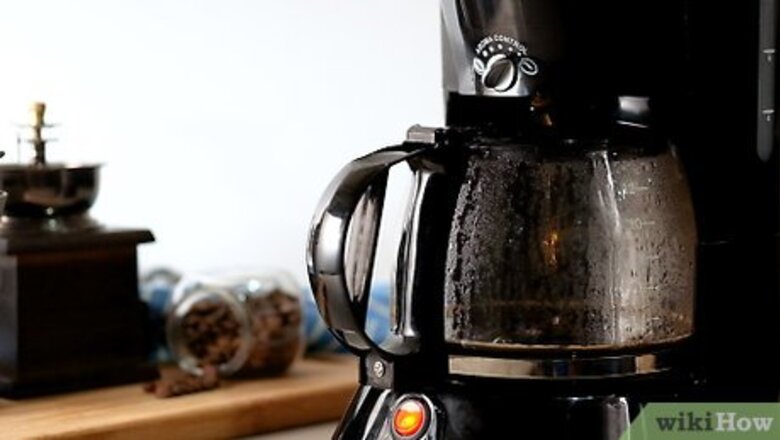
views
X
Expert Source
Rich LeeCoffee & Food Program Director, Spro Coffee Lab
Expert Interview. 22 November 2019.
When you’re ready to get started, using a coffee maker is the easiest way to make a pot that serves multiple people. Clean out your equipment when you’re done to prepare for the next pot!
Choosing Quality Water and Equipment
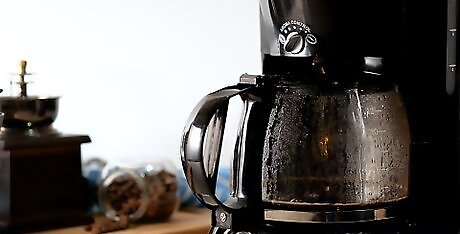
Select a drip machine for an automatic way to make coffee. Drip machines are the most popular way to make coffee because they are so simple to use. All you have to do is put in the ingredients and let the machine do the rest. It heats up the water on its own, then sends it over the grounds to drip into the pot below. You don’t need to put a lot of effort into cleaning and maintaining the machine, either. Drip machines come in a wide variety of sizes. If you intend on making a pot of coffee instead of a single cup, look for a machine with a bigger water reservoir. If you’re looking for a manual alternative, you could try using a moka pot or percolator on the stove.
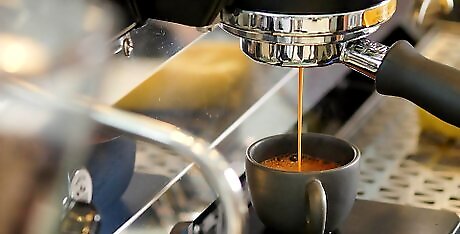
Get an espresso machine if you prefer a quicker, thicker drink. Espresso machines use a pump to force boiling water through the grounds. The coffee comes out faster, but the machine makes individual cups rather than full pots. Espresso machines require high-quality beans or grounds to create a strong, flavorful shot of coffee. You can then add milk to make a cappuccino or latte. Espresso machines use fine-sized grounds. It’s important to remember if you plan on grinding your own beans. Espresso machines come in automatic, semi-automatic, and manual varieties. Use the automatic version for an easy way to make coffee.
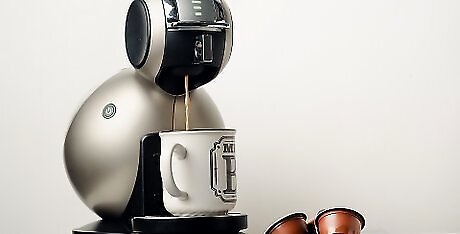
Select a pod machine if you need to reduce cleanup. Pod machines use pods, little containers filled with coffee grounds. The pods fit inside the machine where a filter full of loose grounds would normally go. You don’t have to grind up beans, measure grounds, or clean out filters. The downside is that the coffee flavors to choose from are limited by what pods the manufacturer has to offer, and these pods cost more to replace over time than grounds or beans. Coffee pods produce coffee more similar to espresso than drip coffee. The pods are also single-serve, so you won’t get an entire pot out of them. If you prefer espresso, look for a machine that uses espresso pods. The bigger machines often can make both espresso and regular coffee.
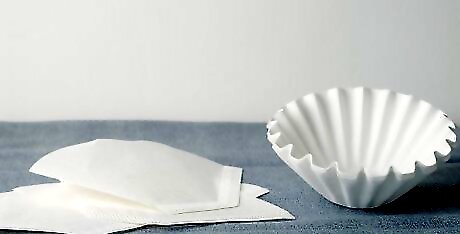
Pick paper filters that fit inside your coffee maker. Both bleached and unbleached paper filters are available no matter what size coffee maker you have. Bleached filters have a bright white coloring and are typically made with chlorine. Many coffee drinkers think they produce higher quality coffee. Unbleached filters aren’t brightly-colored but still produce good pots of coffee. Both of these filter types are disposable. If the environmental impact matters to you, unbleached filters are safer since they aren't chemically treated. If you make coffee without a machine, such as the pour over method, you could get a reusable filter made from metal.
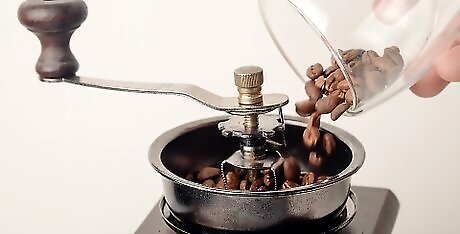
Buy a burr grinder to create grounds that are a consistent size. Conical burr grinders crush beans to a consistent size. There are automatic models as well as handheld ones. The automatic grinders are easier to use since all you have to do is plug them in and throw in the beans. That also makes them a little pricier, but you can find small ones that cost only a little more than the average blade grinder. Regular disc and blade grinders tend to produce grounds of varying sizes, leading to an inferior pot of coffee. Grind your beans in small batches if that is all you have available. If you’re using coffee grounds, you don’t need a grinder. However, your coffee won’t taste quite as fresh or flavorful.
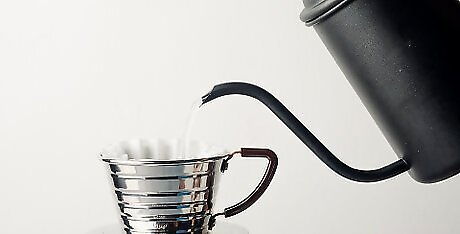
Make coffee with fresh or filtered water. Tap water is acceptable for making a good pot of coffee. However, some tap water has minerals that negatively affect the taste. If you’re looking for consistency no matter where you’re brewing, try using bottled or filtered water. Purchase a home water filter if you’re unhappy with the coffee you get out of tap water. Avoid using softened or distilled water since it lacks minerals that add flavor to coffee. Hard water rich in magnesium and calcium actually makes coffee better.
Using the Right Beans
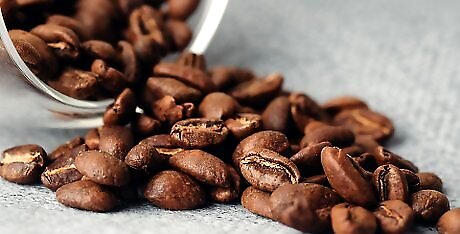
Choose Arabica beans for a more flavorful cup of coffee. There are 2 main types of beans used to make coffee. Arabica beans are the kind grown in high-altitude regions. They have a sweeter, more acidic taste in addition to being less bitter than Robusta beans, which are grown in low-altitude areas. Since these beans are so popular despite being harder to grow, they also tend to be more expensive. There is more to a good pot of coffee than the type of bean you choose. Factors like the growing condition and handling affect the flavor of the bean, so you may end up liking a Robusta brew better than an Arabica one. A cup of coffee made from Robusta beans has about twice as much caffeine than one made from Arabica. The additional caffeine gives the coffee more of a bitter taste.

Pick a country of origin according to your taste preference. Coffee comes from all over the world, which means many different flavors for you to enjoy. You can make good coffee with beans from any location, so it all comes down to personal preference. Test out different products to find what makes your perfect pot of coffee. Even products from the same country can taste very different from one another. Coffee beans from Africa tend to have a strong, robust flavor. Drinkers often compare the taste to grapes and other types of fruit. Kenya and Ethiopia are a couple of common sources of African beans. Beans from South America often have a strong but sweet flavor compared to chocolate and nuts. Brazil and Colombia are a few common sources. Other sources, like Hawaii and Asia, tend to produce earthy beans. It leads to rich, smooth coffee with a flavor comparable to the taste of edible flowers and plants.
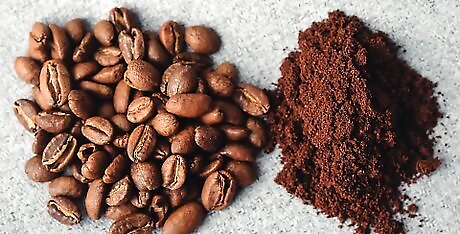
Select a lighter roast to taste more of the bean’s flavor. All coffee is roasted, so don’t be fooled by product labeling. A dark roast means that the beans were toasted so long that they turned black. At that point, you taste more of the roast than the flavor of the beans in your coffee. Stick to light or medium roasts if you like sweeter, tangier coffee with more caffeine in it. Dark basically means burnt in coffee. The beans become charred and oily as they are roasted. Coffee made from these beans often tastes bitter or even burned. Medium roasts are popular in a lot of places. Coffee made from these beans tends to have a strong and balanced flavor.
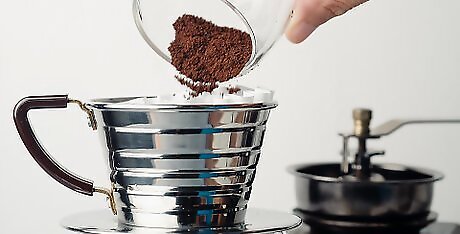
Use coffee within a month of the roast date on the package. Coffee begins losing its flavor as soon as it is processed. Beans are best when used within a week of the listed date, but that isn’t always possible. Check the date when buying or selecting a bag before you make coffee. Try to use the freshest beans for more flavor. Although coffee seems like it lasts forever, it doesn’t. Old beans and grounds are useable, but the end result doesn’t taste the same as coffee brewed from a fresh product. If the coffee bag doesn’t have a roasting date on it, then consider avoiding it. You don’t know how long it has been sitting around.
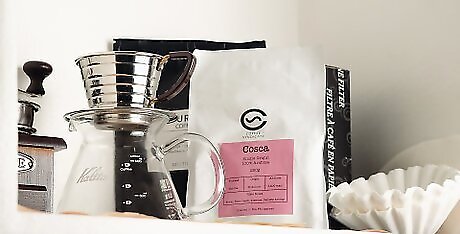
Store beans in a sealed container away from sunlight. Heat, light, air, and moisture all affect how coffee tastes. To prevent your beans from deteriorating, keep them in the bag until you’re ready to use them. Then, move them into a container that isn’t transparent. Store the container in a sheltered spot, such as inside a kitchen cabinet. Beans can be stored in the fridge or freezer if you're careful. Keep them in a well-sealed container to reduce the possibility of moisture damage or freezer burn. No matter how well you store your beans, you can't preserve them forever. To get the best quality coffee, use beans as soon as possible.
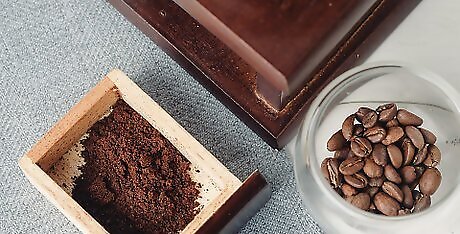
Select a grind size if you’re using grounds. If you’re using fresh beans, you’re going to have to grind them up yourself. The size you need depends on the type of coffee-making equipment you’re using. For drip coffee machines, use medium-size grounds. Adjust your grinder to a medium setting if you’re using one. Fine grounds are similar in consistency to sand and are good for making espressos. Medium-fine grounds are great for pour over coffee. Switch to coarse grounds for French press coffee.
Brewing the Coffee
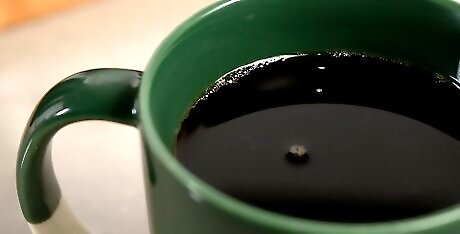
Select how much coffee you want to make. A standard cup is about 6 fluid ounces (180 mL) of coffee. That is less than what you get from purchasing the short size at a quick-serve coffee chain. If you need more coffee to kickstart your day, you’re going to need to use more ingredients. Count how many cups everyone will drink to get an estimate of how much you need to make. For a medium cup of coffee, count on needing to brew 8 fluid ounces (240 mL). This is the same as a short cup at the average takeout chain. Most mugs in the U.S. are also designed for this size. Enjoy a large cup by brewing 10 fluid ounces (300 mL) of coffee. If you’re using a coffee maker, check for measurement guidelines on it. Many machines have volume markings on the pot to help you keep track of what you made.
Add cold water to the reservoir on the coffee maker. The reservoir is a clear plastic bin on one side of the machine. It will be covered by a lid you have to flip up to pour in the water. Coffee makers generally hold about 44 fluid ounces (1,300 mL) of water on average, but yours may be different. Measure out the water using a measuring cup or the coffee pot if yours has markings on it. Pour only cold water into a coffee maker’s reservoir. Hot water could damage it. The ideal water temperature is 195 to 205 °F (91 to 96 °C). The coffee maker will heat up the water for you, but you will need to do it on your own if you’re not using a machine.
Place a filter inside the machine over the coffee pot. Fit the coffee pot firmly in the holster on the front of the coffee maker. Then, open the plastic cover over it. You will see an empty chamber with a spout leading down to the coffee pot. Set a fresh paper filter inside the chamber with the open end face up. Make sure the filter is firmly inside the chamber and covering the spout opening. Most machines use the round filters 8 in (20 cm) in diameter. You do not need to prime the filter by rinsing it out, but you can do it if you want to. Some people believe it leads to better coffee, but with a coffee maker, it doesn't make a big difference.
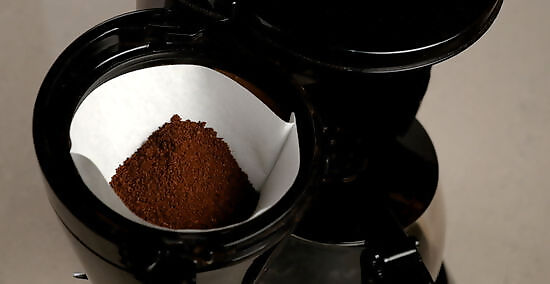
Pour coffee grounds into the filter and close the machine. A basic cup of coffee requires about 2 tablespoons or 10 grams of coffee grounds for every 6 fluid ounces (180 mL) of water you plan on using. Grind up coffee beans first if you’re using them. Then, take a big scoop of grounds and add them directly to the filter. The filter will hold them in place so you don’t end up with bitter sediment floating in your cup. For instance, use about 16 tablespoons or 80 grams of grounds for 44 fluid ounces (1,300 mL) of coffee. Consider this to be a baseline that can be adjusted according to your preference. Use more grounds for stronger coffee and less for weaker coffee. Try brewing a single cup first and then adjusting the grounds to perfect the flavor.
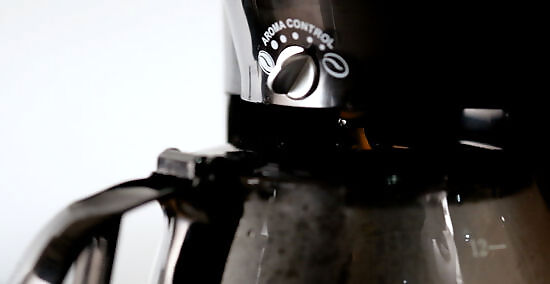
Press the start button and wait for up to 12 minutes. Take a break and let the coffee maker do the rest. Coffee makers take about 5 minutes to brew a single cup and usually a little longer for a full pot. After your machine heats up the water, you will see the coffee begin dripping into the pot. It’s perfect for a hands-free pot of coffee. Keep in mind that if you make coffee without a machine, you will need to pour the hot water over the grounds. The waiting time for a fresh pot is about 4 or 5 minutes but can vary depending on the method used.
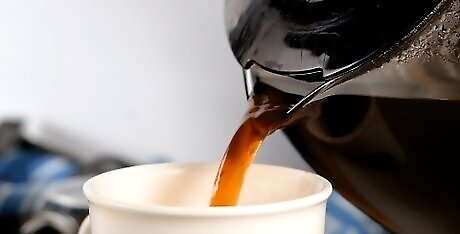
Serve and enjoy the coffee while it’s hot. Coffee is best when it’s consumed right away. Remove the pot and pour the coffee into cups depending on how many people you are serving. If you’re not planning on drinking it right away, transfer it to a carafe to keep warm for up to 45 minutes. Some machines also have the ability to keep coffee warm due to a heater in the platform that the pot rests on. Coffee loses flavor as it sits around. While that old pot of coffee is still drinkable, it won’t taste as good as it does fresh out of the pot. If your coffee maker has a built-in warmer, keep in mind that the coffee still loses quality over time. The heat causes it to become more bitter. To avoid dealing with leftover coffee, brew what you need. You can always make a second pot later!
Cleaning Your Equipment
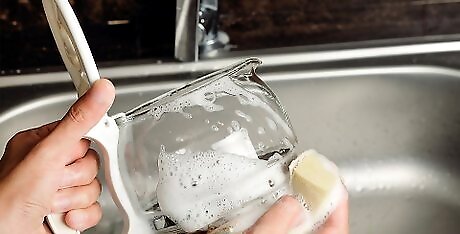
Rinse out the coffee pot with soap and water. Those coffee stains in a used pot look gross, but they also change the way fresh coffee tastes. Rinse the pot out with warm water and dish soap. Scrub away any stains with a sponge, taking care to eliminate any coffee grounds you notice. Remember to rinse out cups and other pieces of equipment. Clean them out each time you use them to prevent buildup from ever forming.
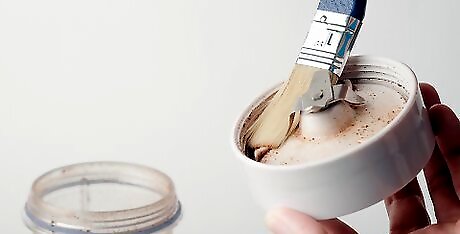
Brush coffee grounds out of a grinder after using it. If you’re using an electrical grinder, unplug it and take it apart. Rinse off the plastic and rubber parts in soapy water. Most grinders come with a soft brush, so use it to knock loose debris in the blades. Wipe them off with a dry cloth to finish removing the old grounds. Avoid washing the blades and motor on an electrical grinder. Water is safe to use on a handheld grinder. Clean the grinder out after each use. The old grounds could affect the quality of the next pot of coffee you brew.
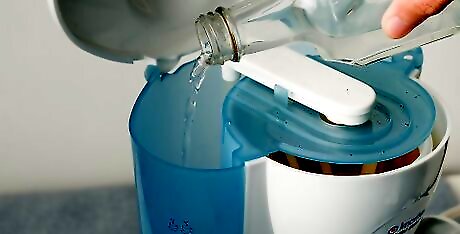
Wash out the coffee maker with vinegar about once a week. Drain the water reservoir, then pour an equal amount of water and vinegar into it. Set the coffee maker to brew a single cup of coffee. After letting it sit for about an hour, pour clean water into the emptied reservoir and run 2 more brew cycles. While you wait, wipe off the outer surface of the machine with a cloth dampened in clean water. If you drink coffee every day, give your machine frequent deep cleanings. You won’t need to do this as often if you don’t make coffee daily, but it’s still a good way to eliminate bitterness from old grounds. If you use a device like a pour over filter or a French press to make your coffee, wash them out with soap and water after each use.

















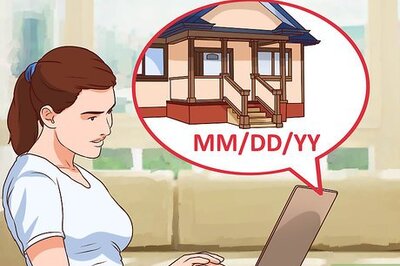
Comments
0 comment